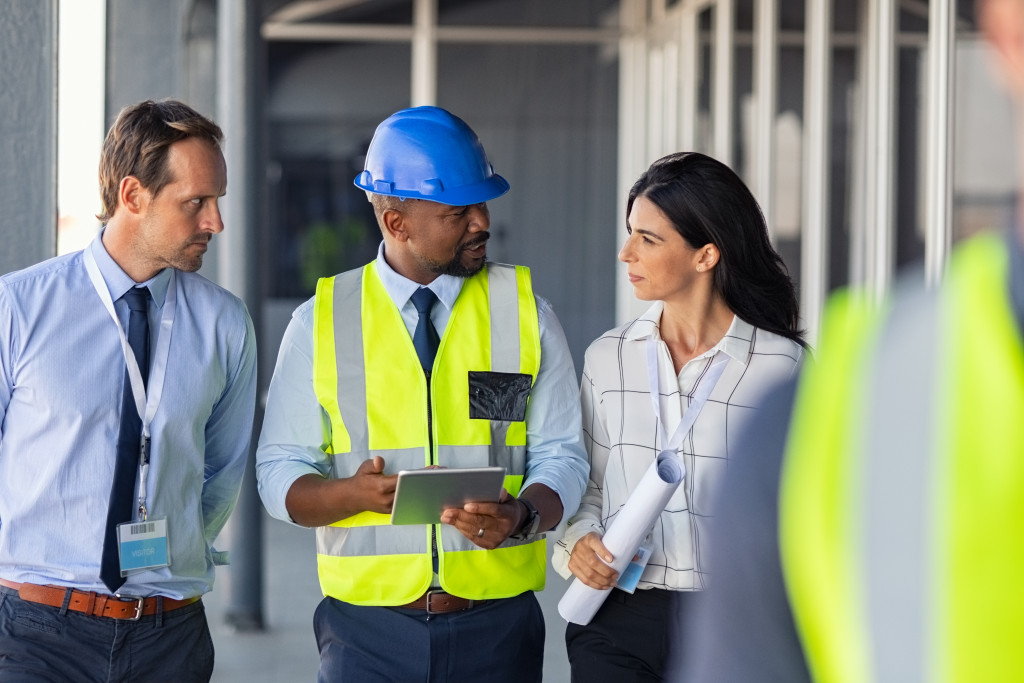- Construction sites are inherently dangerous, so employers must prioritize the health and safety of employees to mitigate potential risks.
- Create a safety ensure high standards are maintained.
- Provide comprehensive training and Education on hazard prevention and control measures.
- Issue personal protective equipment (PPE) to employees and train them on its use and maintenance.
- Neglecting safety can lead to hefty fines, legal complications, damaged reputations, and employee injury/fatality.
The construction sector is a vital component of any thriving economy. However, it is also an industry that poses significant risks to the health and safety of its workforce. From falls to heavy equipment accidents, construction employees face numerous hazards daily.
As entrepreneurs and businesses, prioritizing the well-being of these workers should be a top priority. This blog post will delve into the importance of employee health and safety within the construction industry and provide insights into creating a robust safety culture that keeps everyone on the job.
Promoting Workplace Safety
There are many ways to create a healthier, safer environment for construction workers. Here are some tips to get you started:
Understanding the Risks
Construction sites are inherently dangerous places rife with potential hazards. Some of the most common threats construction workers face include falls, vehicle accidents, electrocutions, and being caught between objects.
According to the Bureau of Labor Statistics, construction ranks among the top industries with the highest fatalities. It is essential for business owners and managers to fully understand the risks associated with their specific projects and take necessary steps to mitigate potential dangers.
Implementing a Safety Culture
The foundation of a successful safety program lies in fostering and emphasizing a safety culture. Everyone within the organization – from top management to entry-level workers – should be committed to maintaining high safety standards.
For example, in the UK, construction firms only hire individuals with a valid Construction Skills Certification Scheme card, proving that employees have received the necessary training and qualifications to work onsite. An employee must first book a CITB test online, pass the CITB health and safety test, and then complete their Health & Safety Awareness Certificate. This is a helpful example of ensuring that employees are properly qualified for the job.
Training and Education

Thorough and frequent employee training is crucial to ensure that everyone on site knows potential dangers and how to react accordingly. The Occupational Safety and Health Administration (OSHA) sets strict training requirements for construction employees in high-risk industries.
Employers should comply with these regulations by providing their staff with knowledge about hazard identification, prevention, and control measures. Additionally, integrating ongoing training into the workforce, such as toolbox talks and refreshers on new or changing protocols, helps to continue the importance of safety.
Personal Protective Equipment (PPE)
Providing appropriate personal protective equipment (PPE) is essential to maintaining construction employee safety. This can include hard hats, safety glasses, gloves, high-visibility clothing, and proper footwear.
Adequate PPE not only acts as a barrier against potential harm but also serves as a visual reminder to workers that safety protocol should always be taken seriously. Employers should diligently ensure construction employees access the right PPE corrective training o, care, and maintenance.
The cons training sequences of neglecting safety

The repercussions of not adequately managing risks in the construction industry can be severe, both for individuals and businesses. For employees, the consequences may range from minor injuries to long-term health issues and, in extreme cases, fatalities.
For companies, the failure to provide a safe working environment can lead to hefty fines and legal complications, not to mention damaged reputations and reduced morale among workers. It’s in the best interest of all parties to ensure that safety is prioritized on construction sites.
The importance of communication and collaboration
Effective communication and collaboration between employees, supervisors, and management are vital for a safe workplace. Regular safety meetings should be held to discuss potential hazards, review current safety policies, and solicit employee feedback.
Clear lines of communication should be established so employees feel empowered to voice any safety concerns without fear of repercussions. By fostering an open, communicative environment, construction companies can proactively identify and address safety risks before they escalate.
Final Thoughts
Prioritizing the health and safety of construction employees is not merely a regulatory obligation; it is a vital aspect of any successful business strategy. By understanding the risks involved in the industry, building and nurturing a safety culture, providing comprehensive training and Education, equipping employees with appropriate PPE, and implementing regular inspections and audits, companies can protect their workforce and improve overall job satisfaction, productivity, and company reputation. By prioritizing safety, entrepreneurs and businesses in the construction industry can help build a safe future where everyone can work and thrive.



